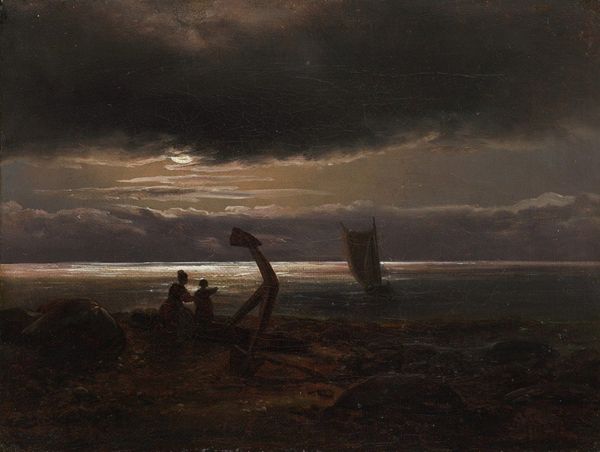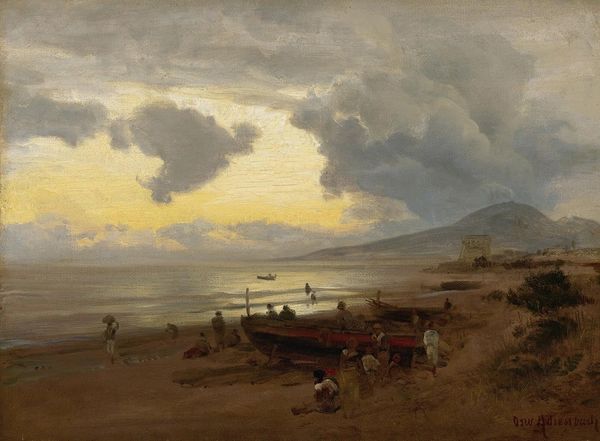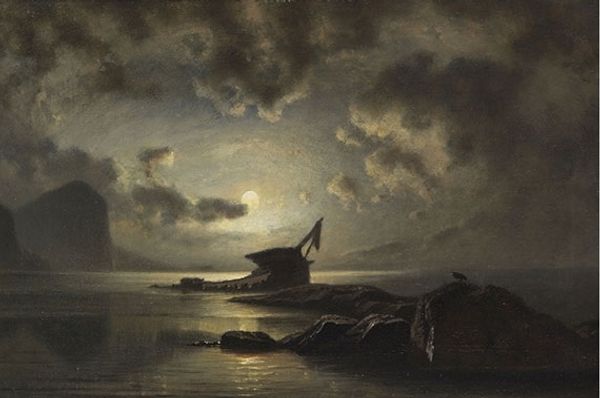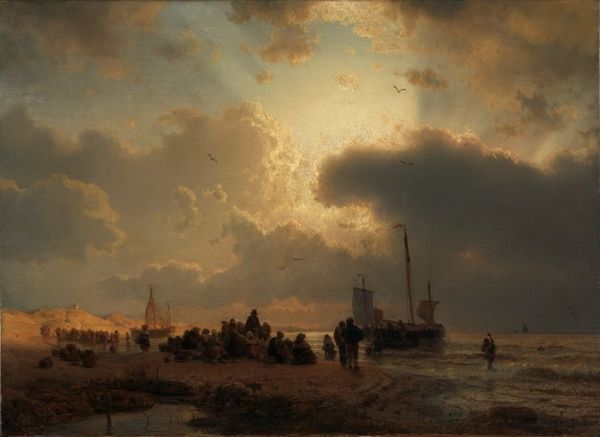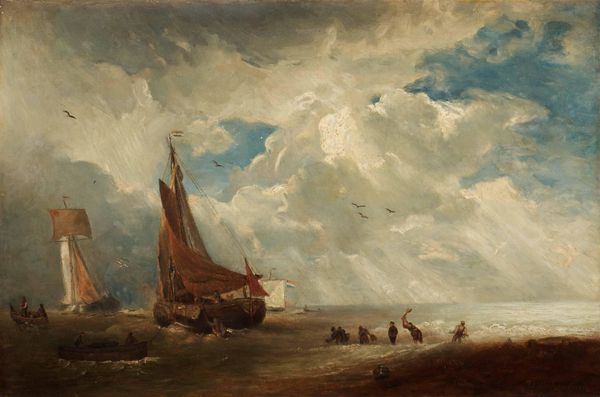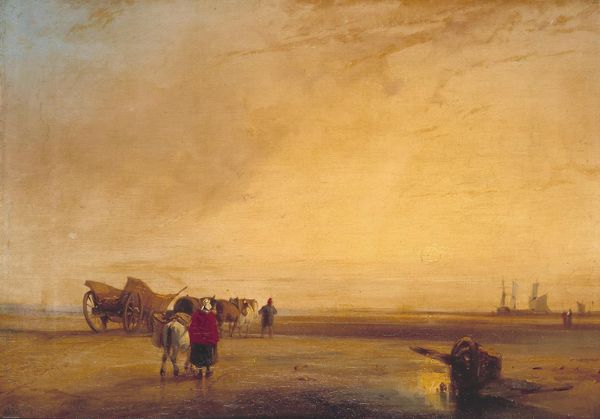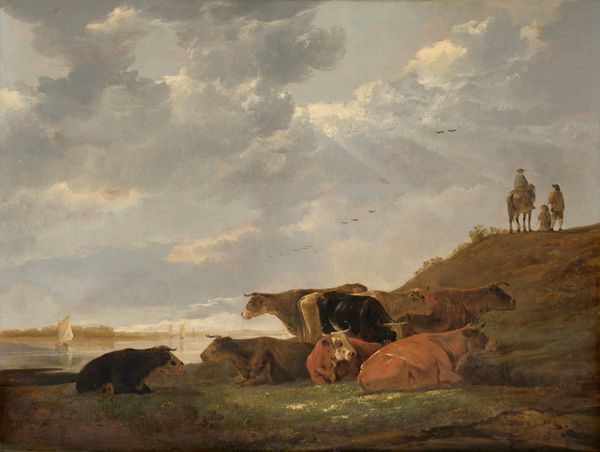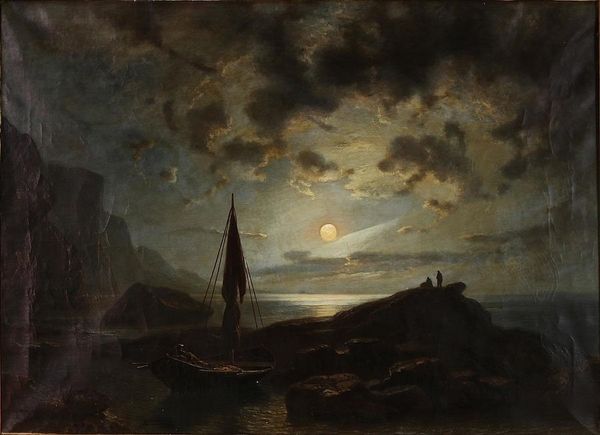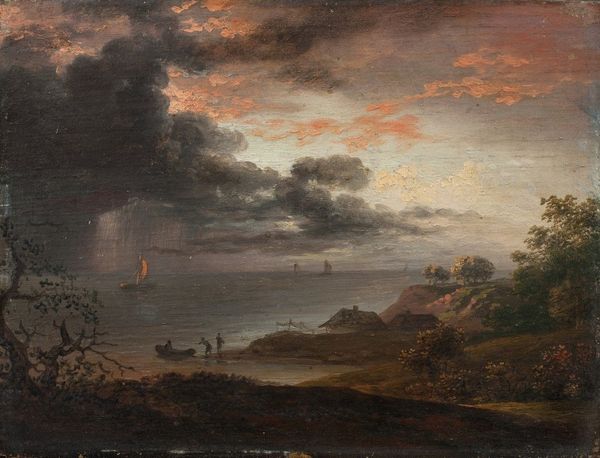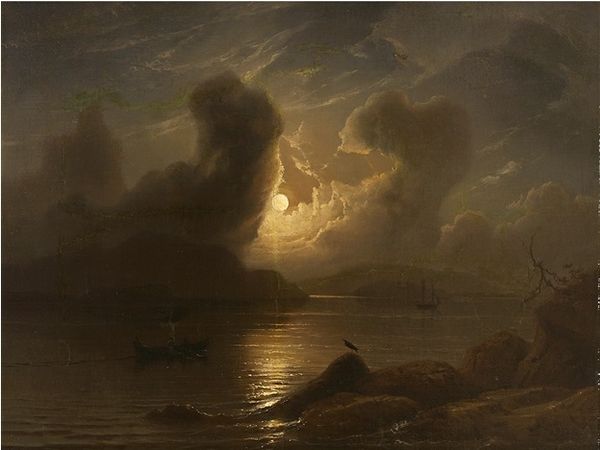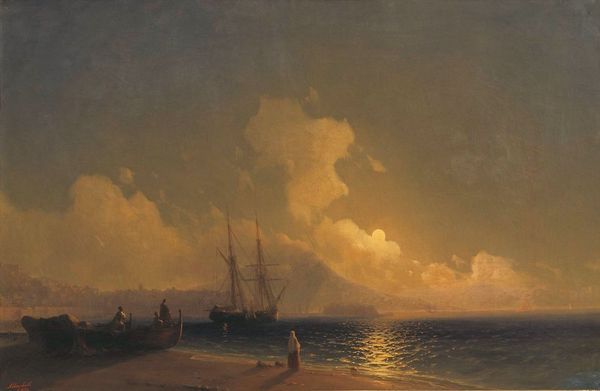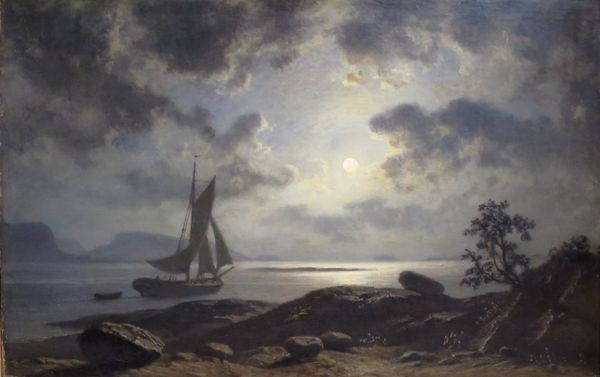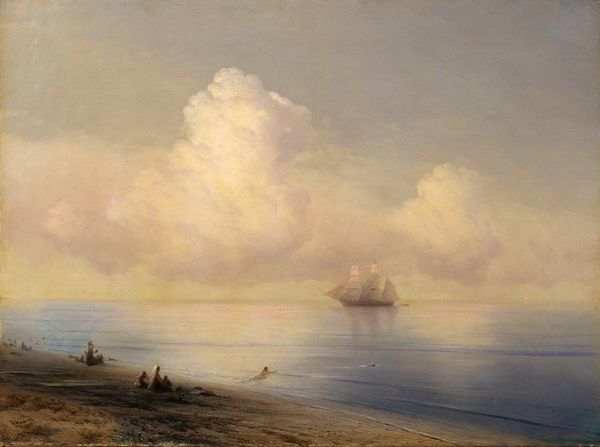
plein-air, oil-paint
#
plein-air
#
oil-paint
#
landscape
#
oil painting
#
romanticism
Copyright: Public Domain: Artvee
Curator: Looking at Johan Christian Dahl's "The Gulf of Naples. Moonlight," created between 1820 and 1821, I’m struck by how the luminescence shapes the scene. Editor: There's such an evocative stillness to this nocturne. I am drawn to the interplay of light and shadow. There’s a subtle tension between the romantic, silvery light on the water and the shadowy drama in the foreground. Curator: It’s quite amazing how Dahl uses oil paint to capture the atmosphere of the moonlit sea, and how this technique contributes to its romantic aura. One could look to the accessibility of such materials during the early 19th century. It’s a good reminder that art is always, in part, the product of specific historical circumstances, materials and class. Editor: Indeed. Placing this artwork within its Romantic era context, you see this intense engagement with themes of sublime nature and the lone human figure set against this overwhelming vista, prompting viewers to contemplate existence and man's relation to nature. But it's hard to not see an elegy about human impact; note the presence of tools for sustenance juxtaposed against the small figures which renders humanity as not belonging there. Curator: Precisely! And the execution of this scene, probably done *en plein air*, further connects us to his engagement with the material reality of painting outdoors in the Gulf's environment, confronting issues of working-class or artisan labor during its creation. It underscores how inseparable an artist’s choices are from socio-economic conditions that provide not just subjects but shape their understanding through practice. Editor: Let’s not overlook the symbolic language in his paintings! The choice of landscape also speaks about colonial dynamics, in which the gulf and this particular population's relation to land became the subject. Those seemingly idyllic landscapes had the potential to mirror both progress and extraction for that period. Curator: It definitely serves as an exploration of the industrial and class systems implicit during Romantic landscape traditions; how it all contributed towards making images from this environment possible given industrial means. Editor: Looking closely, there's so much contained within this small oil painting; not only the romance we anticipate from paintings like these but some of its less acknowledged power relations as well. Curator: The artist provides insight on materiality while implicating an ideological understanding to broaden discussions around Romantic landscape, power structures, and cultural legacies.
Comments
No comments
Be the first to comment and join the conversation on the ultimate creative platform.
